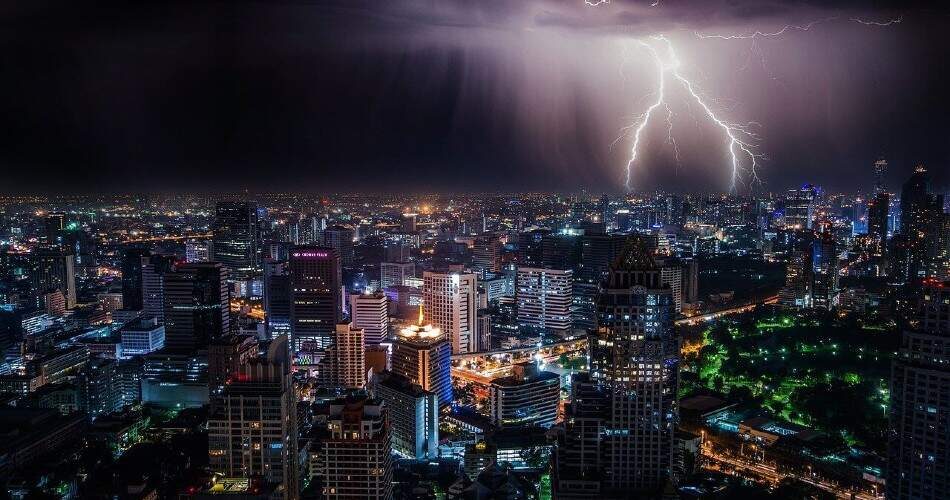Estimated reading time: 4 minutes
Mankind is a strong and adaptable life force. While the Earth has undergone many changes throughout centuries, humanity has found a way to survive and even thrive despite diversity. Weather, living conditions, and deteriorating resources are what stand in our way every single day. How well humanity has adapted is also showing negative results to the Earth. With the incredible knowledge and intelligence of man, there has been little in the way of preventing further deterioration of Earth, and rather a struggle to learn how to get along with the way things have become.
Natural disasters
The Earth is a dangerous place at times. Aside from natural predators, accidents, and the like, humanity faces the wrath of Mother Nature on a daily basis. As a result of global warming, storms, floods, and bad weather are becoming increasingly devastating. Stronger storms are causing humans to adapt and brace themselves to be better prepared for them in the future.
We only have to look at the 2005 disaster of Hurricane Katrina in the United States of America. Almost 2000 people lost their lives, and the total cost of cleanup is still rising from $81 billion.
Then moving into more recent event of the Pakistan floods, which almost certainty was caused by the affects of global warming. It is estimated that 14 million people were directly affected by the floods, with 1,600 losing their lives. It was estimated that these floods were the greatest humanitarian crisis in recent history.
If you look at the recent natural disasters and compare them to those of 100-200 years ago you will see a huge increase in both the amount and the severity of natural disasters, and this is clearly due to the affects of global warming.
Pollution
Mankind has adapted over the past couple of centuries to create a better way of life for most people in existence. However, as we have found, this sometimes comes with a hefty price tag, not only for humanity but for the Earth. As the years progress, humanity invents new and exciting technologies, most of which are causing direct damage to the Earth. We have become increasingly dependent on technology and the energy that powers all our newfound technologies. The affects of this pollution is clearly evident. Some people suffer from severe respiratory problems due to air pollution caused by vehicle, factories, and other industrial pollutants emissions, all of which are manmade.
Continued oil spills cause severe skin irritations and rashes in humans and animals. Water pollution from the run-off of industrial waste causes gastro-intestinal problems and has become a huge issue in developing countries, where the pollutant is actually human waste, which is improperly disposed.
It is believed that the fumes created from transport sources are causing the most problems in terms of pollution. There was even a report that stated that the amount of manufacturing that goes into the creation of electric cars caused a high percentage of carbon dioxide emissions. When you look into the possibility of electric cars, it seems that the problem with them is that the electricity that they are powered by is probably formed by burning coal. It seems like the immediate worry for governments across the world should surround getting people to ″downgrade″ their big 4×4 cars to more environmentally friendly cars.
Nuclear power
With global warming as such a hot topic today, people are struggling to find a balance that works for the energy crisis. Many humans believe that cleaner energy comes in the form of nuclear power. Unfortunately, nothing comes without a price. Scientists and environmentalists urge industries to abandon the dangerous practice of using nuclear power as a cleaner source of energy. Studies show an increased rate of cancer and leukemia cases in areas surrounding nuclear power plants. The adaptation that humans have accepted is ultimately causing the death of some people. Waste from nuclear plants also contaminates water supplies, killing off flora and fauna that are exposed to this waste. Additionally, the scale of nuclear accidents, such as Chernobyl, is much larger than most can comprehend. These dangers are so widespread and lingering that this 1986 disaster is still affecting its victims.
By some, it is also expected that Chernobyl will not be the last nuclear power catastrophe that the world experiences. Did you know that there are still ten or so of the same reactors being used in the world, and these reactors are not due to be changed for the next 30 years?
Hazards and disasters have been around since the dawn of time, but it is only now we see the full affects of global warming on the world’s disasters and hazards. Unquestionably, governments and big businesses need to make sure they are more responsible with their carbon dioxide emissions before the problem becomes any worse. Making sure that there is a suitable plan in place to phase out carbon dioxide emissions and bring in renewable resources is the only way that hazards and disasters will become manageable.
If you want to find out about the most serious problems facing humanity, check out our article on this topic: The 4 most serious problems facing humanity.
[Photo from Pixabay]
